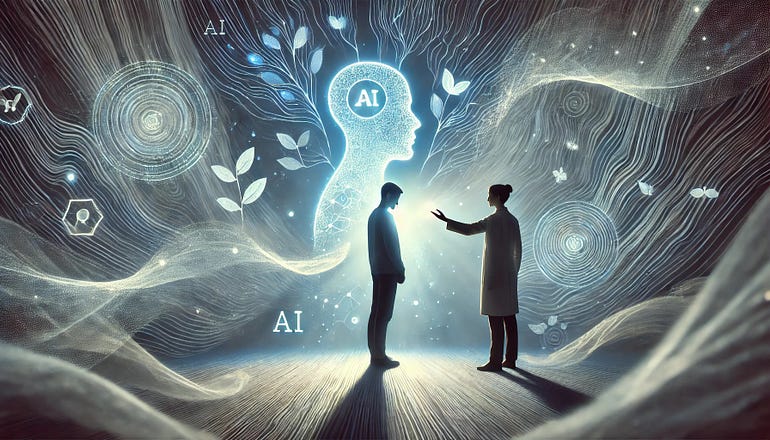
Where Human Empathy and Machine Precision Intersect to Reveal the Mysteries of the Human Mind
Mental Disorders and Artificial Intelligence: Within the infinite depths of the human mind, there exists a delicate and intricate tapestry of recollections, sentiments, and latent anxieties. Here, darkness and light dance together, optimism and pessimism combine, and the surface conceals a fragility that is far from covered. This hidden landscape contains our very identities, but it also has the potential to harbor the hushed ghosts of mental illness. Without notice, these shadows move forward, disrupting lives, dimming goals, and shrouding delight in gloom.
Now, on the brink of a new age, AI is reaching out, not to replace humans but to supplement them, to reflect secret depths that not even the most perceptive humans could miss. Artificial intelligence (AI) acts as a guide and observer in this futuristic society, looking for patterns and trends in the huge ocean of human behavior and thoughts. Even if it lacks empathy, its algorithms have the ability to detect even the most minute changes in behavior, language, or sleep patterns that might indicate an early warning of trouble.
Beyond its original purpose, AI takes on the role of a sentinel, keeping an eye on the delicate margins of mental well-being and trying to shed light on the shadows before they engulf us all.

However, AI isn’t the only one on this journey. Clinical psychologists who have delved into the depths of human pain accompany it with empathy, insight, and knowledge. As a result, they are able to provide treatment that goes beyond the professional and into the emotional, having seen firsthand the anguish and despair of others. With AI on their side, they may view things from a different angle, get to the bottom of things, and hear the little pleas for aid that might otherwise go unnoticed.
Think about how AI can identify the first signs of mental health issues like anxiety and sadness, picking up on little changes that suggest an internal storm is developing before it shows itself externally. It might pick up on subtle changes in speech patterns, including a change in tempo, tone, or word choice. Maybe it notices fewer social interactions, less activity, and more restless nights all pieces of a bigger picture, hints of an ongoing battle that is being fought in secret. Artificial intelligence (AI) steps in as a silent companion at these times, picking up on the first signs of concern so that professionals may provide help before things become worse.
However, we need to proceed cautiously. Artificial intelligence (AI) is powerful, but at its core it is just a machine, a product of logic and code that cannot comprehend the human being behind the pattern, the life beyond the label. It can’t empathise, understand, or hold a person’s pain while still acknowledging their humanity. Here, the field of clinical psychology serves as a poignant reminder of the priceless significance of interpersonal bonds. Though it can provide direction and make predictions, AI is unable to provide solace or cure. The only way to start mending is with a human eye and a kind touch.

Combining artificial intelligence with clinical psychology yields better results than any field could achieve on its own. Psychology provides depth, complexity, and empathy, while AI provides speed, scale, and insight. Through this partnership, technology may be used to pay tribute to the unseen battles of those fighting inside, to reach out to them before they go too far, and to provide a helping hand when it is most needed. This collaboration is not about prying into people’s minds; rather, it is about building a support system, a caring watchtower, a means of seeing the invisible, and a place to listen to the silent sufferers.
Let us not forget that we are accompanied not just by science but also by spirit as we go into this uncharted territory. We go on in the hopes that while we learn to anticipate, we are also learning to listen, to pay heed to the murmurs of the soul and the thoughts that pass through the mind. Perhaps it is in this pursuit that we realize we are using technology to comprehend the mind but also to increase our capacity for compassion, foster more empathy, and accept the frailty that embodies our exquisite and vulnerable humanity.
Standing on the brink of a future where compassion and science converge to illuminate the depths of the mind, where artificial intelligence and humans work together, mutually enhancing one another, in a common endeavor to alleviate suffering, inspire hope, and lead the way.



